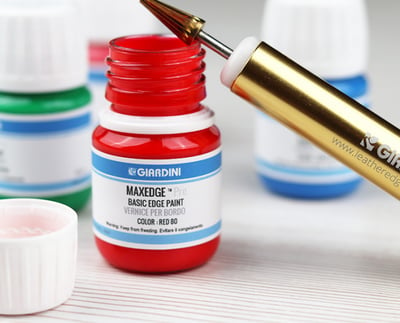Have you ever opened a bottle of paint and discovered that it was no longer usable?
I think it is one of the most annoying things that can happen to a craftsman at the peak of his work.
Unfortunately, this can occur with water based colors that you rarely use and this led to the paint expiring.
What are the fundamental precautions to prevent this from happening?
First of all, when purchasing a paint, you need to be aware of its shelf life and the amount of paint you intend to use during that time.
Information on shelf life can be found on data sheets, labels or is provided by the seller. The shelf life indicates how long the paint will remain stable and usable.
In our case, on the bottle you will find the package date to which you have to add 12 months to calculate the expiration date.
Please note that once the bottle is opened, it will no longer have 12 months for the expiry date but 6.
It is important to know that the expiry date is not standard for all paints, but varies depending on the type of paint: generally, solvent/alcohol-based paints have a longer shelf life of around 24 to 36 months, while water-based paints have a shelf life of around 12 to 14 months.
However, if one does not pay attention to a few simple but essential precautions, the durability can be drastically reduced, due to the delicate nature of paints, especially water-based ones.
The biggest enemies of paint are bacteria, which can creep in and proliferate, quickly rendering the paint unusable, creating lumps on the inside and giving off a bad smell.

So what are the precautions that should be taken?
These suggestions are valid for both water-based and alcohol-solvent-based paints
STORAGE TEMPERATURE
Each paint usually has a storage temperature range indicated. Try to find a suitable place that does not have both low and hot temperature peaks. For water-based paints in particular, freezing must be avoided at all costs, as the paint will then be completely ruined. On the contrary, if the outside temperature is too high, the paint will become more liquid. In addition, high temperatures encourage the proliferation of bacteria.
DO NOT POUR USED PAINT INSIDE THE ORIGINAL BOTTLE
Roller dye tools or automatic machines are equipped with a tray into which paint must be poured for dyeing operations. If some of the paint remains in the tray, do not pour it back into the bottle - NEVER DO IT!
All the dirt and bacteria on the tray will contaminate the entire paint bottle. The advice is to use a separate container.
TIGHTLY CLOSE THE BOTTLE WITH THE CAP
It sounds obvious, but air is one of the worst enemies of paint. Not only because leaving the bottle open causes it to dry out, but also because there is always dust and bacteria of all kinds in the air (especially for those who work with leather), which fall into the paint and can lead to its contamination.
DO NOT PUT THE TOOL DIRECTLY INTO THE BOTTLE
When using an applicator for painting, it may be natural to dip it directly into the bottle to pick up the colour. But this should be avoided at all costs, because the applicator can never be sterile and can introduce impurities into the original bottle..
ONLY USE PURIFIED WATER
This only applies to water-based paints. Sometimes, if the paint has become a little dry or if it is too thick for easy application, water can be added. But always PURIFIED water.
By using tap water (or even mineral water) there is always the risk of introducing bacteria into the original bottle, which accelerates the deterioration process of the paint.
These are some small steps you can take to ensure that your paint always performs at its best. Do you use all these precautions?



